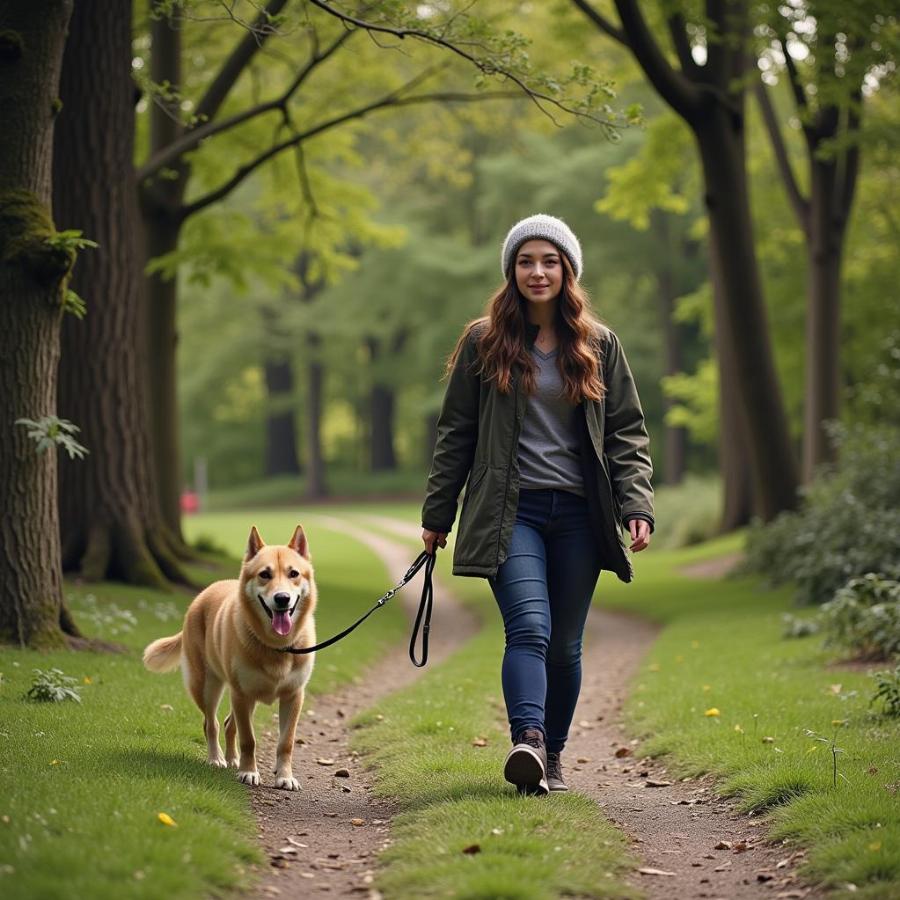Coyotes killing dogs is a tragic reality for many pet owners, and a valid concern for those living in areas where coyotes roam. Understanding coyote behavior, recognizing potential dangers, and taking proactive steps to protect your dog are crucial in minimizing the risk. This article delves into the reasons behind coyote attacks on dogs, offers practical tips for safeguarding your canine companion, and provides valuable resources to help you coexist safely with these wild animals.
Why Do Coyotes Attack Dogs?
Coyotes are wild animals driven by instinct, and their interactions with dogs can be complex. While some attacks are predatory, others stem from territorial disputes or even a misguided attempt at play that quickly turns dangerous.
- Predation: Smaller dogs, especially those left unsupervised, can be seen as prey by coyotes, particularly during times of food scarcity. Puppies and elderly dogs are especially vulnerable.
- Territoriality: Coyotes are highly territorial, and they may perceive a dog, especially a larger one, as a threat to their territory. This can lead to aggressive confrontations, particularly during mating season.
- Pack Mentality: Coyotes often hunt in packs, which can make them bolder and more likely to attack even larger dogs. A single dog can quickly become overwhelmed by a group of coyotes.
- Misdirected Play: Sometimes, a coyote may initiate an interaction with a dog that resembles play. However, these interactions can escalate quickly, especially if the dog responds defensively.
How to Protect Your Dog from Coyotes
Protecting your beloved canine companion from coyote attacks requires a multi-faceted approach. Here are some crucial steps you can take:
- Never Leave Your Dog Unsupervised Outdoors: This is the single most important preventative measure. Even in a fenced yard, a determined coyote can find a way in, or dig under a fence.
- Keep Dogs on a Short Leash: When walking your dog, especially in areas known for coyote activity, keep them on a short leash (6 feet or less). This allows you to maintain control and react quickly if a coyote is sighted.
- Avoid Walking Dogs at Dawn and Dusk: Coyotes are most active during these times, so avoid walking your dog during these periods. If you must walk at these times, choose well-lit and populated areas.
- Make Your Yard Less Attractive to Coyotes: Remove potential food sources, such as fallen fruit, pet food, and unsecured garbage cans. Trim bushes and shrubs to eliminate hiding places. Install motion-activated lights and sprinklers to deter coyotes.
- Carry Deterrents: When walking your dog, consider carrying a deterrent such as a walking stick, an air horn, or pepper spray. These can be used to scare away a coyote if it approaches.
 Dog Walking on Leash in Coyote Country
Dog Walking on Leash in Coyote Country
What to Do If You Encounter a Coyote
While prevention is key, knowing how to react in a coyote encounter is essential:
- Make Yourself Appear Larger: Stand tall, wave your arms, and shout loudly. Make yourself look as intimidating as possible.
- Do Not Run: Running can trigger a coyote’s chase instinct. Instead, back away slowly while maintaining eye contact.
- Protect Your Dog: Pick up small dogs immediately. Keep larger dogs close and use your body to shield them.
- Use Deterrents: If you have them, use your air horn, pepper spray, or walking stick to scare the coyote away.
- Report the Sighting: Contact your local animal control or wildlife agency to report the sighting. This helps them track coyote activity in your area.
What Do Experts Say?
“Coyotes are adaptable and intelligent creatures,” says Dr. Emily Carter, a wildlife biologist specializing in urban coyote populations. “Understanding their behavior and taking proactive steps to protect your pets is the best way to ensure peaceful coexistence.”
FAQ: Coyotes and Dog Safety
- Can a coyote jump a fence? Yes, coyotes are excellent jumpers and can easily clear a 6-foot fence.
- Are coyotes afraid of dogs? Not always. Coyotes can be intimidated by larger dogs, but they may see smaller dogs as prey.
- What are the signs of coyote activity in my area? Tracks, scat, and sightings are all signs of coyote activity. You may also hear them howling at night.
- How can I report a coyote sighting? Contact your local animal control or wildlife agency.
- Are there any repellents that work against coyotes? While some commercial repellents are available, their effectiveness is often limited. The best deterrent is to remove attractants and secure your property.
- What should I do if my dog is attacked by a coyote? Seek immediate veterinary care for your dog. Report the attack to animal control and wildlife authorities.
- Are coyotes dangerous to humans? While rare, coyote attacks on humans can occur. It’s important to respect their space and never approach or feed them.
Further Reading on Beaut Dogs
- Dog Safety Tips for Urban Environments
- Understanding Dog Body Language
- Choosing the Right Fence for Your Dog
Beaut Dogs: Your Trusted Source for Canine Information
Beaut Dogs is your one-stop resource for all things dog-related, providing reliable and in-depth information about the canine world. From breed characteristics and care guides to training tips and product recommendations, we’re dedicated to helping you provide the best possible care for your furry friend. When you need support, contact Email: [email protected] to receive detailed and accurate answers from Beaut Dogs. We are committed to empowering dog owners with the knowledge and resources they need to build strong and loving relationships with their canine companions. Visit https://beautdogs.com today to explore the wonderful world of dogs and learn how to care for them in the best possible way.